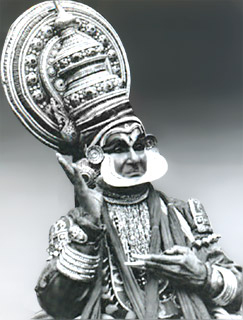 Guru Kunchu Kurup is a very famous Kathakali dancer of Kerala. He was famous not only in the southern parts of India but was equally famous in central and north Kerala as well. This famous dancer of Kerala was initiated into the realm of Kathakali at a tender age of thirteen by his uncles Kochappi Panikker and Rama Panikker.
Guru Kunchu Kurup is a very famous Kathakali dancer of Kerala. He was famous not only in the southern parts of India but was equally famous in central and north Kerala as well. This famous dancer of Kerala was initiated into the realm of Kathakali at a tender age of thirteen by his uncles Kochappi Panikker and Rama Panikker.
Guru Kunchu Kurup was born in the Poypallilkulam family. He was born in the Thakazhi village in the present day Allapuzha district. As he was initiated to the Kathakali Dance initially he was under the tutelage of Mathur Kunhu Pillai Panikker and gradually he was under the guidance of gurus Chambakkulam Sankara Pillai and Thottam Sankaran. Finally his grooming came under the influence of Vechur Ayyappa Kurup and Guru Kunchu Kurup paved his way into Kochi and Malabar belts.
Kunchu Kurup was married to a relative of Palayil Karunakara Menon, a maestro in Kathakali Dance and his marriage in fact strengthened his ties with central Kerala. Guru Kunchu Kurup was soon made a trainer in Kerala Mandalam and during his life time he had also served as gurus in Bengaluru, Chennai and finally he had become a tutor at Chembakassery Natana Kalamandalam in Allapuzha district.
Guru Kunchu Kurup had a huge fan following. He had also won Padma Shri Award for his excellent performance. It was Guru Kunchu Kurup who had created the fresh aesthetics of Kathakali performance. His acting and dancing skills involved sublime presentation of rasa and bhava abhinaya.
Kunchu Kurup had gained popularity for his performances as Nala, Hamsam, Rugmangada, Arjun and Lord Krishna. Besides these mythological characters he had also excelled in his performances of the minukku veshams such as Kuchelan, Brahmanan and Sundara Brahmanan. Portraying the characters of the anti-heroes was another speciality of Kunchu Kurup. For instance he performed the role of Ravana, Keechaka and the black-bearded Kaatalan.
For his marvelous performance and his noteworthy contribution in the field of Kathakali Guru Kunchu Kurup had been honoured with the national award for Kathakali in 1956. He had also received the Central Sangeet Natak Academy fellowship in the year 1969.



















